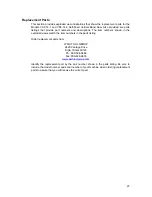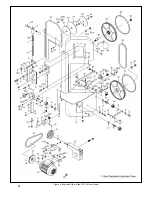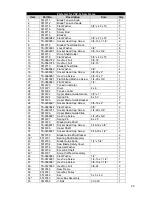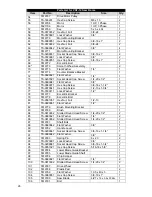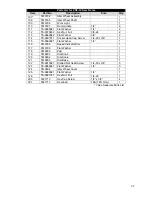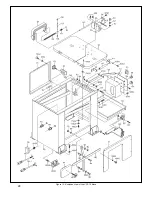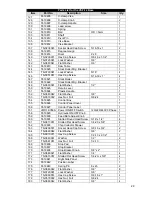
14
the feed rate. The control cylinder offers no resistance when the saw frame is moved
backward. A knob on the control panel controls the rate at which the saw frame moves
forward. The control knob (needle valve) controls the rate at which the hydraulic fluid is
released from the hydraulic cylinder. When the needle valve is closed, the cylinder is
locked. With the needle valve slightly open, the cylinder permits slow, or light, force.
Opening the needle valve further increases the feed rate and applies more force to the
saw blade and the work piece.
The needle valve is adjusted until the saw is operating efficiently. The efficiency of
operation is usually evaluated by observing chip formation. (Refer to Evaluating Cutting
Efficiency for more information on cutting efficiency.
Evaluating Cutting Efficiency
Is the blade cutting efficiently? The best way to determine this is to observe the chips
formed by the cutting blade.
•
If the chip formation is powdery, then the feed is much to light, or the blade is dull.
•
If the chips formed are curled, but colored – blue or straw colored from heat generated
during the cut – then the feed rate is to high.
•
If the chips are slightly curled and are not colored by heat – the blade is sufficiently sharp
and is cutting at its most efficient rate.
Setting the Vise for Angle Cuts
The vise can be adjusted through a 45
o
arc. Adjust as follows:
1. Loosen the hex head bolt and remove the taper pin on the vise.
2. Rotate the vise to the desired angle. For accurate cuts, use a variable protractor
to set the position of the jaw; align one side of the protractor with one side of the
blade.
3. Re-install the taper pin and tighten the hex head bolt on the vise.
Setting the Vise for Square Cuts
The procedure for setting the vise for square cuts is identical to setting for angle cuts (see
Setting the Vise for Angle Cuts
)
except that a machinist’s square is used to position the
vise.
Work Setup
1. Move the saw frame to its rearmost position by pushing down on the saw frame
release lever (Figure 3 Item 2) and lock it in place by turning the saw frame release
knob (Figure 3 Item 1.2) clockwise.
2. Turn the c-clamp handle counterclockwise enough to fit the stock.
3. Place the work piece on the worktable. For long work pieces, provide support at the
other end. If necessary, provide additional downward clamping to hold the work piece
securely on the worktable.
4. Clamp the work piece in the vise by rotating the c-clamp handle clockwise.
Do not allow the blade to rest against the work piece when the saw is not
cutting.
Setting the Blade Guide Bracket
The band saw has an adjustable blade guide bracket. The blade guide bracket allows
you to set the blade guide for varying heights of work pieces.
To make accurate cuts and prolong blade life, the blade guide bracket should be set one
inch above the piece to be cut. Adjust the bar position as follows:























